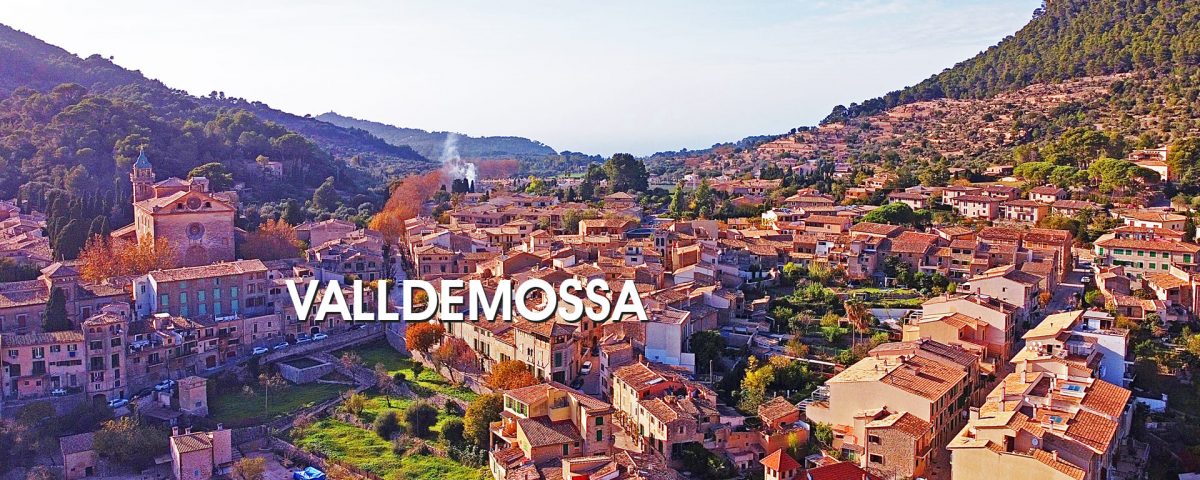Valldemossa: experience history and culture
The old village of Valldemossa in the mountains above the northwest coast of Mallorca has been famous since Chopin and George Sand stayed on the island. It swaddles travellers with the quiet, picturesque melancholy of sandstone-coloured houses with hanging flower pots, green shutters, winding alleys and cobblestone pavements. The old Carthusian monastery of the town is a witness to the tragic love story of George Sand and Frédéric Chopin and was already there when Catalina Thomás, one of the patron saints of Mallorca, Saint Catherine of Palma, was born in Valldemossa. Many travellers visit places like Catalina's tomb in the church of Santa Maria Magdalena in Palma and pay their respects after staying in the saint's birthplace.
Once in Valldemossa, visitors can immerse themselves in the spirit of past times and be transported by the sights of the village 180 years back in time to the winter of 1838/39, following the footsteps of George Sand and Frédéric Chopin. Or back 480 years to the life of the young Catalina and her mystical rapture in the fields of the Tramuntana – or even 850 years back to the late Middle Ages and King Jaume II of Mallorca. In summer, travellers find peace in the village; in winter, the sunrises inspire with their clear light. Here, visitors can conquer the Tramuntana while on holiday, discover picturesque places, walk under almond and orange trees, taste olive oils and descend to the harbour along steep paths. Walking along the coast, you can discover a Cala (bay) like the Cala S'Estaca; a perfect place to relax.
The Valldemossa Charterhouse
The history of the Carthusian Monastery, or Charterhouse, takes today's visitors back to the Mallorca of the late Middle Ages and to the time of the Aragonese Reconquista and the kingdom on the island of Mallorca. King Jaume II of Mallorca had a high palace built for his son in 1309. The palatial character of the complex can be clearly seen in the view from the lookout point, located just behind the large right-hand curve of the Ma-1110. After the conquest of the island by the Kingdom of Aragon in 1399, Martin II of Aragon donated the palace to the Carthusian Order, which used the complex as a Carthusian monastery for 400 years until its secularisation in 1835. Both the Carthusian monastery and the church dating back to 1751 can be visited. From 1835, the cells were rented to secular visitors of Mallorca who had had enough of the island's tourist attractions. In 1838, the most famous holiday guests – George Sand and Frédéric Chopin – became part of Mallorca's history. Their rooms are part of the Celda de Frédéric Chopin y George Sand museum, which exhibits the belongings of the famous composer. You can even see the piano on which Chopin composed his famous Raindrop Prelude.
The lay of the land
Next to the charterhouse, the Jardins Rei Joan Carles invite you to pause. Before or after visiting the sights, you should not miss the opportunity to do a bit of window shopping. Boutiques and artisan stores add to the charm of the town. The tranquil village comes alive on Sundays with the weekly market, when people from Palma and the whole island come to visit. Alongside Mallorcan regional specialities you will find fruit and vegetables, household items and souvenirs. You will also find the famous leather goods from the island of Mallorca. The birthplace of St. Catherine of Palma, in Carrer de la Rectoria, one of the sights of the village, is located in the north-eastern part of the town opposite the charterhouse. Every year, on the 28th of June, there are festivities in honour of the saint. The town is decorated for the occasion and visitors flock from all over the island.
Taste olive oil at Finca Son Moragues
You can reach the Finca Son Moragues armed with a good map and following the Ma-1130 and Avenida Lluis Salvador Cilimingras in a north-westerly direction. The gnarled olive trees of Son Moragues alone are a sight worth the trip. Visits and tastings are offered all year round.
Valldemossa harbour and Cala S'Estaca
Further northwest – on a hike in which you have to overcome an increase in altitude of 400 metres – after about 6 km you reach the harbour of Valldemossa, famous for fish and seafood served in the restaurants around the jetties. Above the harbour, a hiking trail leads to the idyllic fishing village of Cala S'Estaca, which can only be reached on foot. The hike passes by olive trees and takes approximately one hour. Houses made of natural stone, built in the rocks, surround the small harbour in the Cala. The crystal-clear waters of Cala S'Estaca are perfect for cooling down and invite you to swim and snorkel.
Getting there from Palma de Mallorca
By car on the Ma-1110
From Via de Cintura (Ma-20) turn onto Carretera de Valldemossa (Ma-1110), pass the Hospital Universitari Son Espases towards Universitat de les Illes Balears and continue out from the city. After S’Esgleieta, with the small village church Iglesia De Santa Maria D'Olivar, the bizarre foothills above Son Termes come into view on the right hand side. On the hill is the golf resort Golf des Son Termes. Don't turn at Son Termes, but follow the Ma-1110 into a densely wooded promontory. Before Valldemossa, the Ma-1110 does a large right turn and you can spot the town to the left, between the mountains. Almost 100 m after the end of the curve, you can see the vantage point with a direct view of the charterhouse. The town is circumnavigated by the Ma-1110 in a large curve. You must leave your car in one of the parking lots outside the town, since it is a car-free area. The total distance is about 16 kilometres and the trip takes around 20 minutes.
By public transport
The quickest way to get to Valldemossa is taking bus 203 from stop 40046 Carretera de Valldemossa in the north of Palma de Mallorca. The bus bypasses Valldemossa on the large arch of the Ma-1110 and stops at stop 63001 on the western outskirts of the town. The trip takes about 20 minutes.
Valldemossa: Experience History and Culture
Immerse yourself in the rich tapestry of the past with the Valldemossa experience history and culture. Nestled in the mountains above the northwest coast of Mallorca, Valldemossa is a quaint village that has captured the hearts of many, including the likes of Chopin and George Sand. It’s a place where the ancient sandstone houses, adorned with hanging flower pots and green shutters, whisper stories of old to those who walk their winding alleys and cobblestone pavements.
Valldemossa: Experience History and Culture in the Carthusian Monastery
The old Carthusian monastery, a testament to the tragic love story of George Sand and Frédéric Chopin, is a must-visit spot in Valldemossa. It has stood the test of time, witnessing the birth of Catalina Thomás, one of the patron saints of Mallorca, Saint Catherine of Palma. It’s a place that transports you back in time, allowing you to walk the same paths as George Sand and Frédéric Chopin did in the winter of 1838-39, or even further back to the life of the young Catalina and her mystical rapture in the fields of the Tramuntana.
Experience the Spirit of Past Times in Valldemossa
Valldemossa is not just about its rich history. It’s also a place where you can experience the tranquillity of village life, be it in the peaceful summer months or the inspiring winter sunrises. Discover picturesque places, walk under almond and orange trees, taste olive oils, and descend to the harbour along steep paths. Along the coast, you can discover a Cala bay like the Cala S’Estaca, a perfect place to relax.
The Valldemossa Charterhouse: A Journey Back in Time
The history of the Carthusian Monastery or Charterhouse takes today’s visitors back to the Mallorca of the late Middle Ages and to the time of the Aragonese Reconquista and the kingdom on the island of Mallorca. King Jaume II of Mallorca had a high palace built for his son in 1309. The palatial character of the complex can be clearly seen in the view from the lookout point located just behind the large right-hand curve of the Ma-1110.
From 1835, the cells were rented to secular visitors of Mallorca who had had enough of the island’s tourist attractions. In 1838, the most famous holiday guests, George Sand and Frédéric Chopin, became part of Mallorca’s history. Their rooms are part of the Celda de Frédéric Chopin y George Sand museum, which exhibits the belongings of the famous composer. You can even see the piano on which Chopin composed his famous Raindrop Prelude.
Discover the Charm of the Village
Next to the charterhouse, the Jardins Rei Joan Carles invite you to pause. Boutiques and artisan stores add to the charm of the town. The tranquil village comes alive on Sundays with the weekly market when people from Palma and the whole island come to visit. Alongside Mallorcan regional specialities, you will find fruit and vegetables, household items and souvenirs. You will also find the famous leather goods from the island of Mallorca.
Every year on the 28th of June, there are festivities in honour of the saint. The town is decorated for the occasion and visitors flock from all over the island. You can reach the Finca Son Moragues armed with a good map and following the Ma-1130 and Avenida Lluis Salvador Cilimingras in a north-westerly direction. The gnarled olive trees of Son Moragues alone are a sight worth the trip. Visits and tastings are offered all year round.


